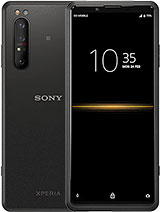A $2500 Teardown?! - its a party on the inside... By JerryRigEverything
Today we're going to find out what makes this Sony Xperia Pro tick from the inside. At $2,500, it's a very specific phone for a very specific group of professionals. It's mostly made out of a rugged plastic. It has a vibrator that sounds like an old school 90's flip phone. But luckily, this guy also has a headphone jack. So corded headphones are an option.
But there are a lot of times where wireless headphones are just better... like exercising, or listening to a podcast or audio book when you're across the room. Huge thanks to Raycon for sponsoring this video. Raycon is a company dedicated to designing premium wireless audio for half the price of other brands, with a real focus on customer experience. Raycon is so confident that you'll like their earbuds, they have a 45 day free return policy, which is impressive.
There are multiple colors to choose from. The company was co-founded by Ray J, and endorsed by a lot of celebrities like Snoop Dog and Mike Tyson. The Raycon's E25 have 6 hours of play time, and an extra 24 hours of battery inside that carrying case. I always use my wireless headphones on the treadmill because one time a long time ago I was running and my hand hit the cord of my plugged in headphones and caused my phone to fly across the gym, so I knew it was time to switch things up. Wireless is just safer for my phone.
And with how small these Raycons are, they'll have no problem staying in my ears. I'll leave a link for these down in the video description with a bonus 15% off coupon code for you guys. Just head to buyraycon. com/jerryrigeverything. And huge thanks again to Raycon for sponsoring this video and supporting the channel.
Now it's time to see what's inside the world's only real professional smartphone – the Xperia Pro. Let's get started. The Xperia Pro has branded itself as so professional that we expect the insides to be all down to business as well... but that's not exactly the case. Already, taking off the back panel is rather unique.
Normally with glass phones I try to be super careful, since glass is glass, and glass breaks. But this phone is plastic, and although we can see the heavy duty waterproofing adhesive holding the whole thing together, the back panel can still be removed fairly easily without any heat. Of course, this does kill the factory water resistance. I do like plastic phones though since it's a big part of the phone that will never break or shatter. Once the back panel is off we can see the little NFC copper coil.
There is no wireless charging, and the only piece of glass back here to be found is on the camera lens, and that gets removed with the back panel. One interesting thing Sony has done is that they've colored all of their screws with a soft pastel anodizing, something we've literally never seen, ever, inside of a cell phone. It's kind of like a Easter egg hunt up in here. It's got soft purple screws, blue screws, and even some greenish/yellow screws. Kind of cute.
One thing I was curious about are all these graphite pads on the back. It took me a second to realize what they're for. Graphite pads are embracing the inner back metal panel. Kind of like a warm hug. We all like warm hugs.
But before I show you what they're used for, I'll remove the bottom L-shaped metal bracket, then another black plastic bracket up here on the top right. And then the large metal panel can come away from the inside of the phone revealing that each of those graphite pads are connected to the 5G antennas – one for each side of the phone. The graphite helps wick the heat away from the antennas when they are working hard professionally, transferring the professional camera footage over the Internets during professional live streams. It's a tough task. The metal plate is a good spot to dissipate all of that heat.
Most 5G phones we've taken apart so far have been made of metal and metal is just naturally good at getting rid of heat. But since this phone is plastic, the 5G antennas need a little extra help staying cool. Well, so far we have warm hugs, and more color than a quinceanera. Let's see what else this Xperia Pro has to offer. With the battery disconnected, just like a little Lego, and another bracket removed around that camera lens, I'll unclip each of the 5G antennas and we can get a close up look at this guy.
These do the super high-speed millimeter wave stuff, you know, the frequency of 5G usually only found in large cities. I'll unclip the golden power button ribbon and the extension ribbon that connects the motherboard and bottom board. Speaking of which, the motherboard has 3 screws of its own, some wire ribbons, and then, of course, the expandable memory and SIM card tray. Then yet another small metal bracket can come loose, and we can pull out the front 8 megapixel camera from the phone body. It's encased in white plastic.
Then, of course, we have our good friend the headphone jack up here in the top corner as well. Finally, we get the motherboard out. There is a little resistance because of the way the microphone is waterproof with adhesive holding it to the top left corner. It's a double stacked motherboard like we've seen in other phones, like the newer iPhones and Samsungs. And it's got yet another metal bracket holding the camera connectors in place.
Sony uses more brackets and random pieces of metal inside their phones more than any other manufacturer. They must really like puzzles over there. Once the cameras are separated from the motherboard, we can check for the optical image stabilization. The top 12 megapixel ultra wide camera does not have OIS. The 12 megapixel telephoto lens does have OIS.
And the bottom 12 megapixel main camera also has that OIS. Then of course, the time of flight camera is just over there doing its 3D depth sensing stuff. I'll get the cameras put back into the motherboard since I've only got enough brain cells to keep track of half of these brackets. I'll try to keep them organized. With the motherboard gone, we get a glimpse of what looks like a very large vapor chamber underneath the screen which we just might have to take a look at.
But first, the battery. Sony has put a very large 4,000 milliamp hour battery inside of the Xperia Pro. At first I thought it was glued down solid. You can see it's very much secured to the phone body. But Sony, being the brilliant forward thinking, environmentally conscious recycling enablers that they are, added magic pull tabs.
It's much easier to recycle a phone when you can safely remove the parts that go boom. And now that the battery is very much freed from the confines of its housing, it's 4,000 milliamp hours and 15.4 watt hours. Moving down towards the bottom of the phone. Looks like we have some more, yeah you guessed it, brackets. We still have yet to find the vibrator.
And judging by the vibrations we felt from the outside of the phone, it's really really small. Once we get the board lifted off, there it is, schooched over into the far left corner. I'll pull off the brackets over the USB-C port and remove the bottom 5G antenna, then the small loudspeaker can come loose. This also has the waterproofing screen over the speaker opening. Remember, this phone is IP65/IP68 water resistance.
It has two ratings. The IP65 is a test with water jets at 4psi from 10 feet away, which is like rain. Then the IP68 is full submersion at one and a half meters, which of course would require all of the flaps on the phone to be closed in order to survive. Finally, we get our fingers on the vibrator. This skittle sized dollop of circular metal has the force of like 5 ants at full gallop, or the soft putter of butterfly wings.
I can't even seem to hold it, it's so small. Let's just say that like zero percent of the Xperia Pro's $2,500 price tag went into designing and paying for the vibrator. I mean, don't get me wrong, Sony was probably just too busy doing all the other cool stuff with the phone, like adding an HDMI port and teasing us with some epic thermal cooling under the display that we can't even get a really good look at. It's quite the internal struggle over here. Do we break what's probably the world's nicest 4K smartphone screen just so we can see the cooling? Or do we spend the next hour trying to reassemble the 50 brackets and colorful screws that hold this whole thing together and just miss out on possibly the largest vapor chamber of all time.
The correct answer is always “let's do it for science. ” The heat gun will help soften the adhesive under the display and make things a little easier. But like with all glued to the frame smartphone displays, there is a zero percent chance that the screen survives removal. And trust me, this is just as painful for me as it is for you. But, take a look at that vapor chamber.
This guy is bigger than any gaming phone we've ever come across. Personally, I think Sony does have to overcompensate a little since the phone frame is plastic and not doing any help removing heat. This internal vapor chamber is doing 100% of the thermal work and pushing the heat out through the screen. You can even see a little ingress point at the bottom of the vapor chamber where liquid was probably injected inside before it was sealed shut. And these little golf ball style divots over the top give it even more surface area to dissipate that heat, just like the fans on a CPU heat sink.
Once I stab it to check for liquid, we do have to be pretty quick since it's a minute amount, and once exposed to the outside air, the liquid can evaporate pretty quick. The vents you see inside used to wick that cooling around inside the sealed vapor chamber as it heats up and cools down. And there it is, a whole lot of liquid evaporating, along with any hopes that this phone screen can be operational again. Replacement parts for Sony phones are pretty hard to find. I don't think they sell a whole lot, so there isn't a whole lot of extras to go around.
Usually repairing Sony phones involves finding two broken phones that are the same model and frankensteining them together to make one working phone. But I'll keep my eyes open so I can get this one repaired and back to working order again. I think seeing that vapor chamber was worth it. Sony now holds the record for the largest internal cooling system, and they aren't even a gaming phone. But like always, let me know what you think down in the comments.
Hit that subscribe button if you haven't already. Come hang out with me on Instagram and Twitter. And thanks a ton for watching. I'll see you around.
Source : JerryRigEverything




























